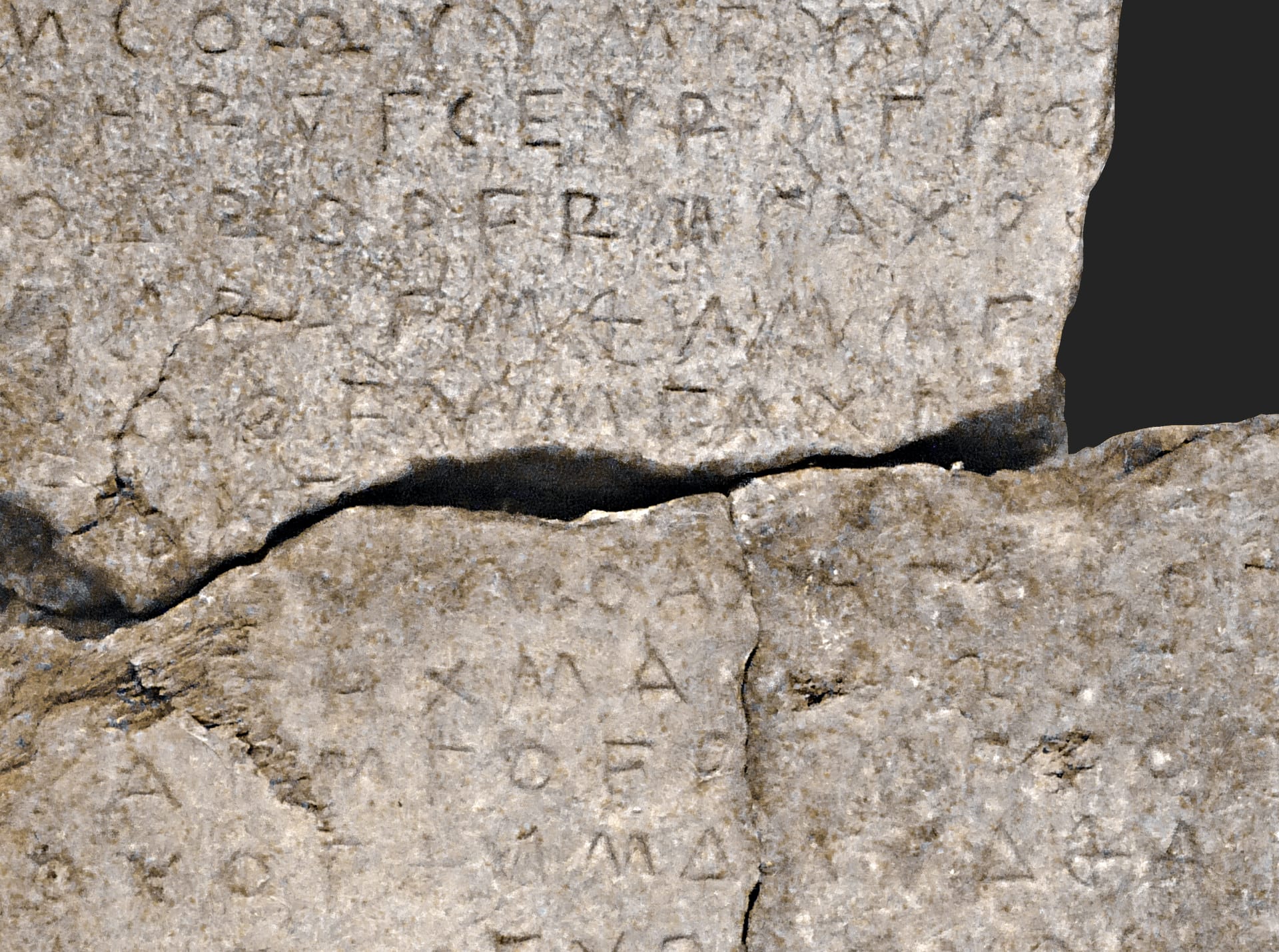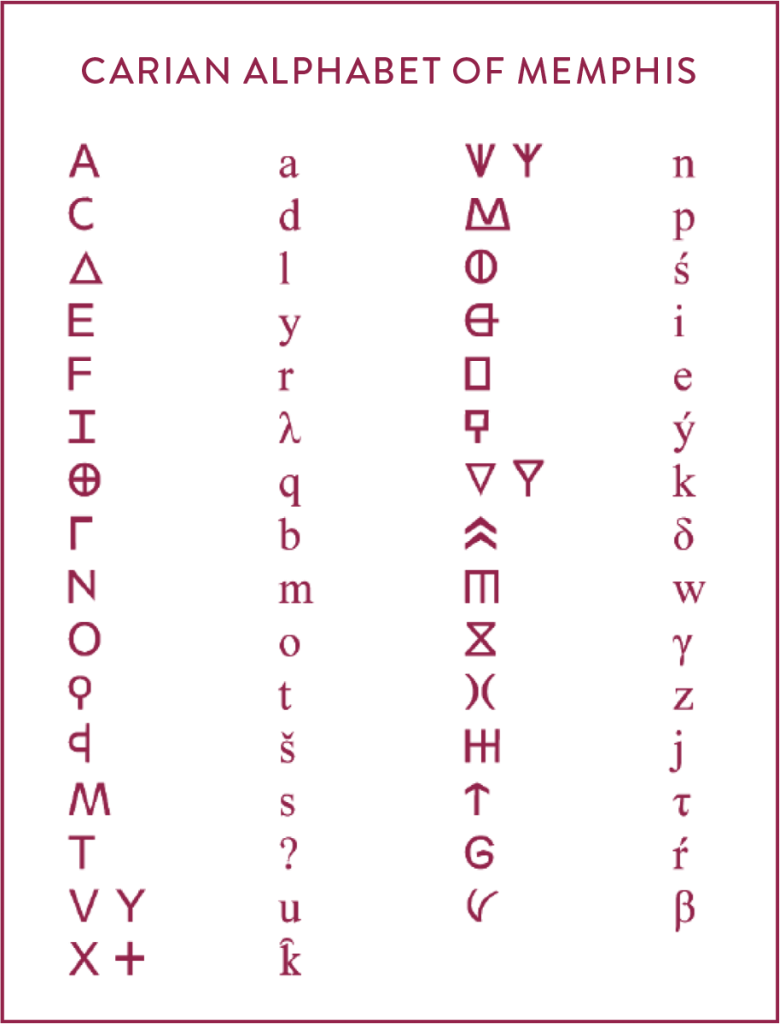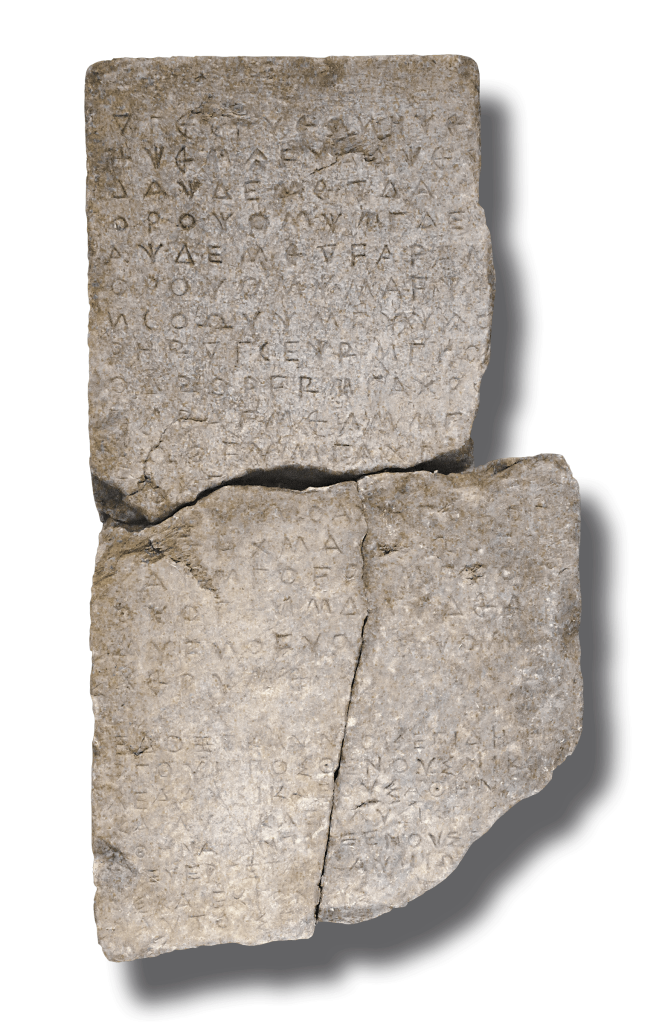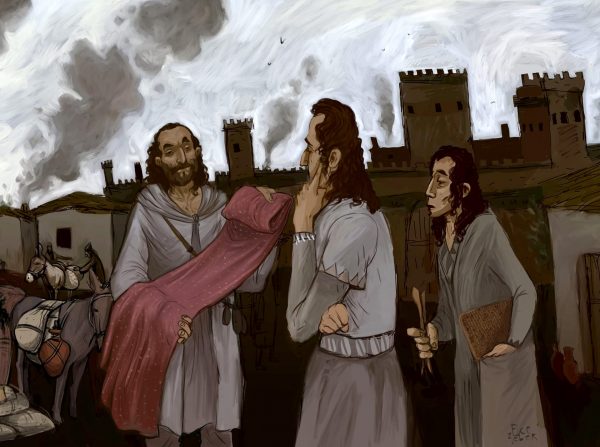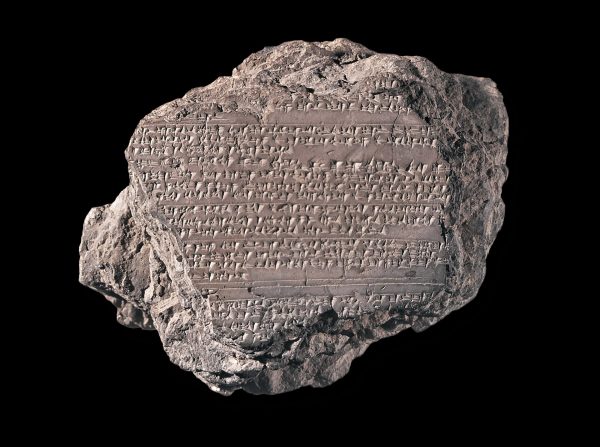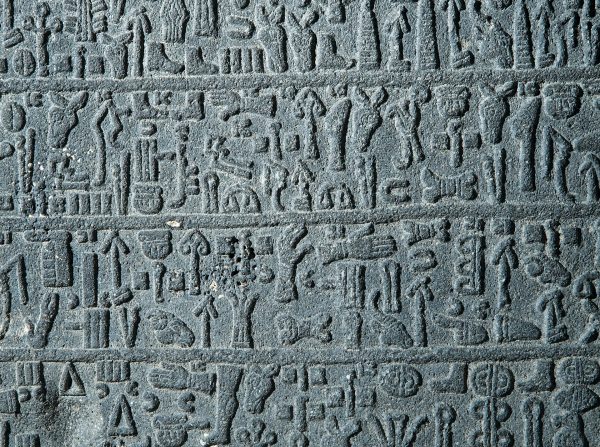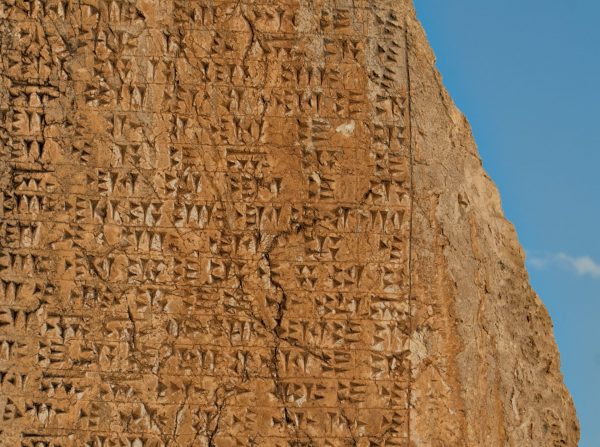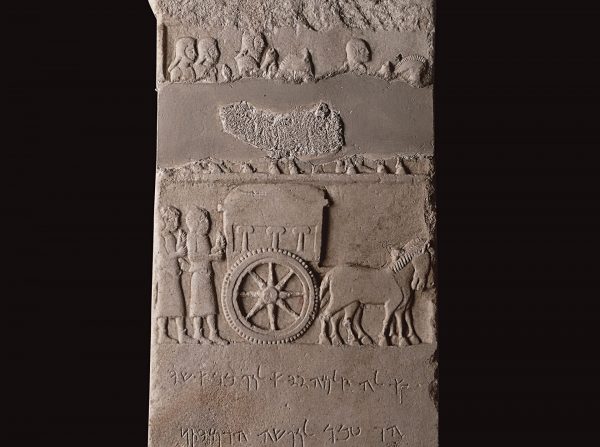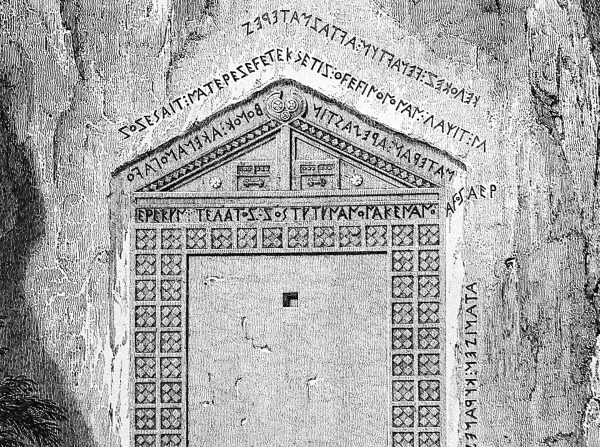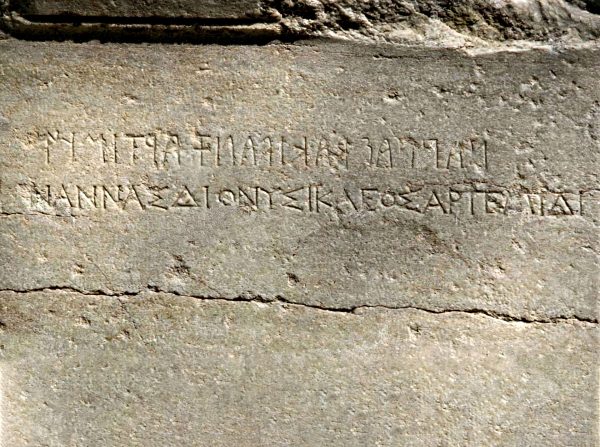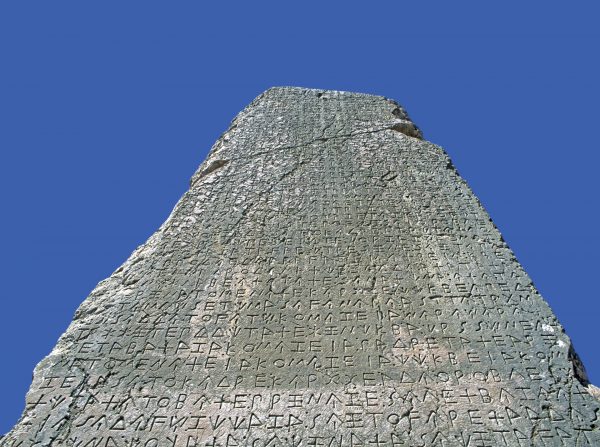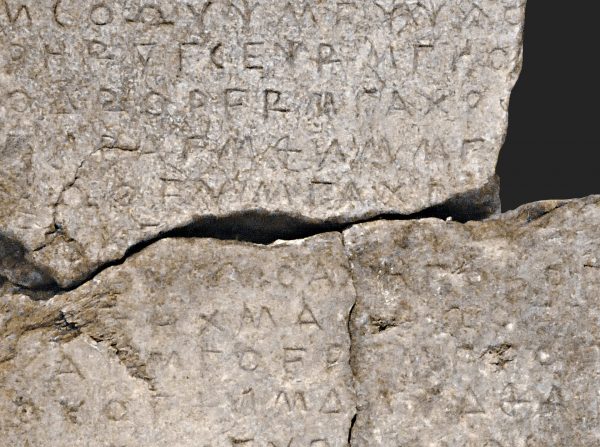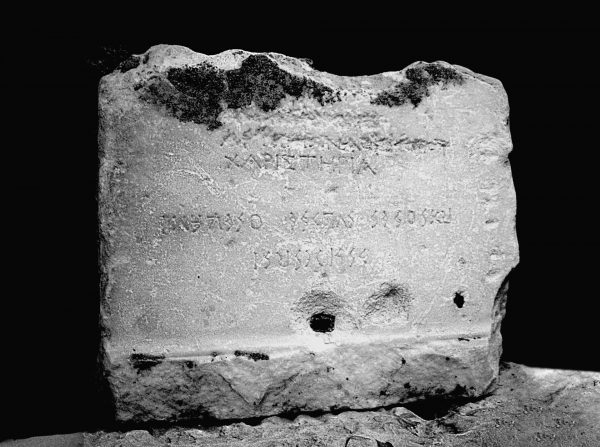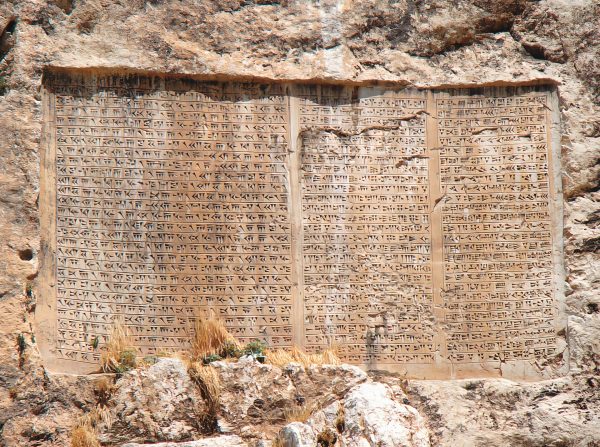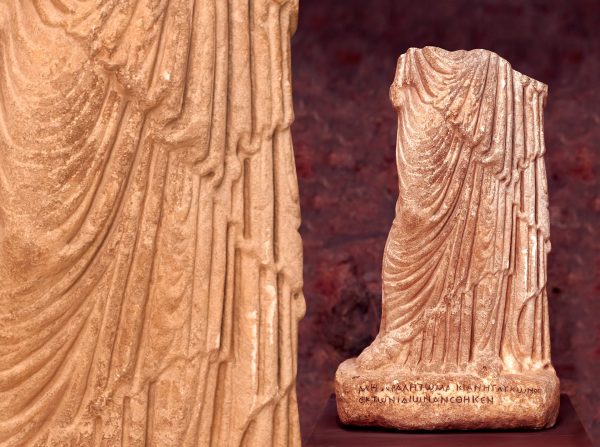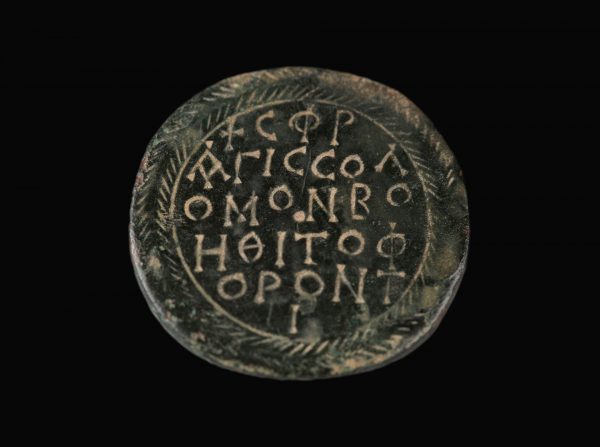Carian was the language written and spoken by Carians, who lived in the area that corresponds to the southwestern part of Anatolia today. This language was deemed unrefined and indecipherable by the Hellenes of the same period. It is possible that the significant distinction of phonetic values between Carian and Hellenic was the cause of this perception. The letter P (rho) in Hellenic corresponded respectively to Sh, D to I, K to T, E to Ü in Carian. The letters K (kappa) or π (pi) in Hellenic were absent from Carian. Possibly confused, Hellenes had difficulty in understanding Carians.
Dated from 7th to 4th century BC, a large number of Carian inscriptions have been discovered. The oldest texts written in Carian language were unearthed, not in the Caria region, but rather in Abu Simbel, Abydos, Memphis, and Sakkara in Egypt. The reason for this was the Carian mercenaries hired by Pharaoh Psammethichus in Egypt. The majority of these inscriptions are often comprised of graffiti written on the walls of sacred places, as well as names written on votive offerings and tomb gifts. In fact, it is possible to say that the oldest Carian inscription was discovered in Egypt.

